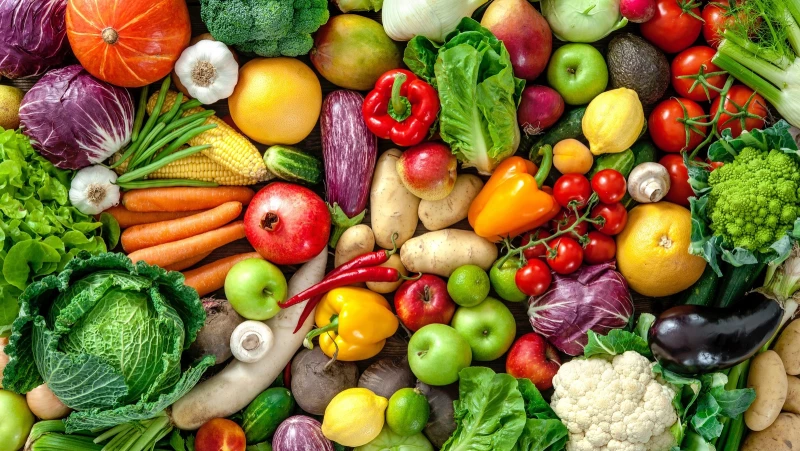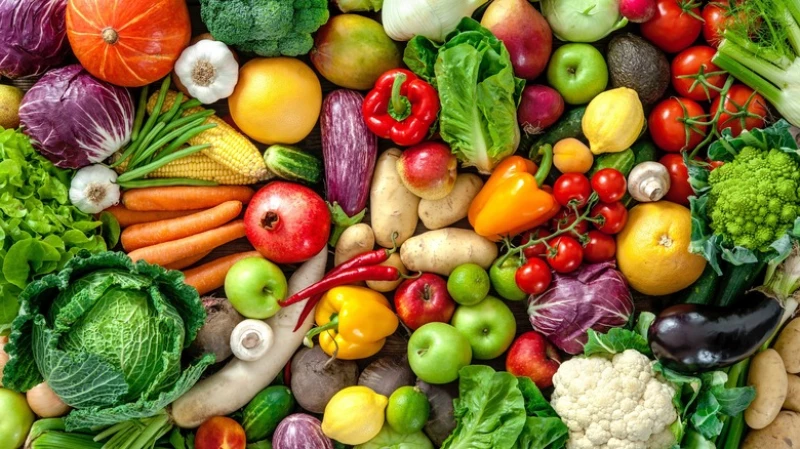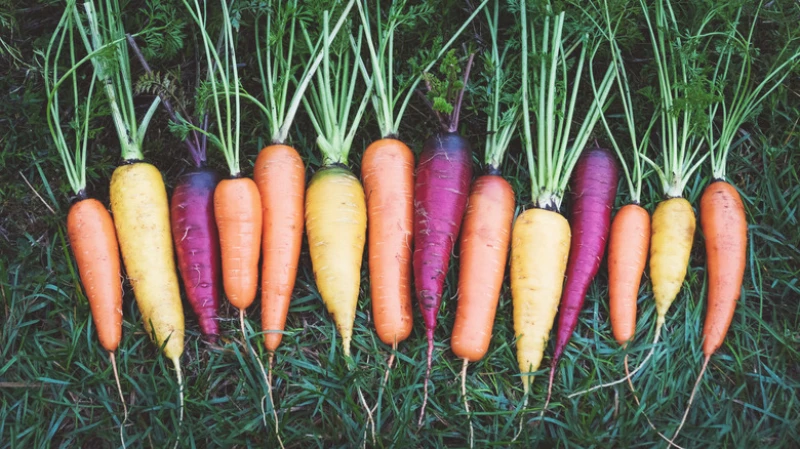Engaging in vegetable gardening not only satisfies our taste buds but also pleases our eyes with the colorful produce. Nowadays, there is a wide variety of vibrant cultivars available that can turn your garden and dining table into a visual delight. By planting colorful lettuces, tomatoes, squash, peppers, potatoes, and other root vegetables, you can fill your surroundings with a rainbow of hues.
While most vegetables are commonly associated with specific colors like red, orange, yellow, and brown, the rise in popularity of heirloom varieties and the introduction of new hybrids have brought about a range of unique colors. Whether you choose heirloom or hybrid seeds, mixing them in your garden can create a diverse and visually appealing harvest.
If you're venturing into growing new seeds, it's essential to heed the advice on the seed packets, especially if the growing conditions differ from what you're accustomed to. Online gardening forums and blogs can also provide valuable insights and information. To create a color-centric garden, consider organizing your planting based on colors and grouping similarly-colored crops together to create a vibrant contrast or a rainbow effect. However, don't forget to consider companion planting guidelines when deciding where to sow your seeds.
1. Rainbow carrots
Rainbow carrots are a delightful choice for any garden. These vibrant vegetables are available in Chantenay (short and dense) and Danvers (medium length and cylindrical) varieties. They are perfect for serving raw with dips or roasted alongside other root vegetables. You can opt for individual seeds of colorful carrot types like Cosmic Purple (purple with yellow cores), Atomic Red (rose red), Lunar White (creamy yellow), or Solar Yellow (bright yellow). Alternatively, you can choose a mix that includes varieties with names like Glow Stix or Carnival Blend. Carrots are relatively easy to grow successfully, whether in containers or in the garden.
2. Red lettuces
There are a variety of red lettuces available, with most being loose leaf lettuces. These red leaf heirloom lettuce varieties come in different shades of red, some with burgundy-tipped leaves and others dark red all over. Red lettuces are not only a colorful addition to salads but also packed with antioxidants. For optimal growth, lettuce prefers cool temperatures, partial sun, and regular watering. Some cultivars to consider for growing colorful red lettuces include:
- Rouge D'Hiver: a romaine variety with red tips and edges
- Merlot: deep wine-red loose leaf lettuce
- Lollo Rosso: very frilly crimson-purple leaves
- Marvel of Four Seasons: a butterhead type with cranberry-red leaves
The color of purple sweet potatoes may be unusual, but these vibrant tubers are grown and consumed similarly to regular sweet potatoes. Known for their slightly sweeter flavor compared to orange sweet potatoes, purple sweet potatoes add a colorful touch to any meal. Popular cultivars of purple sweet potatoes include:
- Purple Majesty: dark purple skin and flesh
- Murasaki: reddish-purple skin with creamy white flesh
- Purple Passion: magenta purple inside and out
While red beefsteak tomatoes are a summer favorite, consider planting some golden beefsteak tomatoes for a twist. These firm, juicy, and sweet tomatoes, also known as "slicers," are great for sandwiches or salads. For successful growth, ensure they receive plenty of sunlight and good air circulation. Some golden beefsteak tomato varieties to try include:
- Sunny Boy: bright lemon yellow
- Kentucky: huge, gold with pink tints
- Yellow Brandywine: yellow-orange version of the beloved heirloom
- Golden Jubilee: medium size, golden yellow, low acidity
5. Purple kale
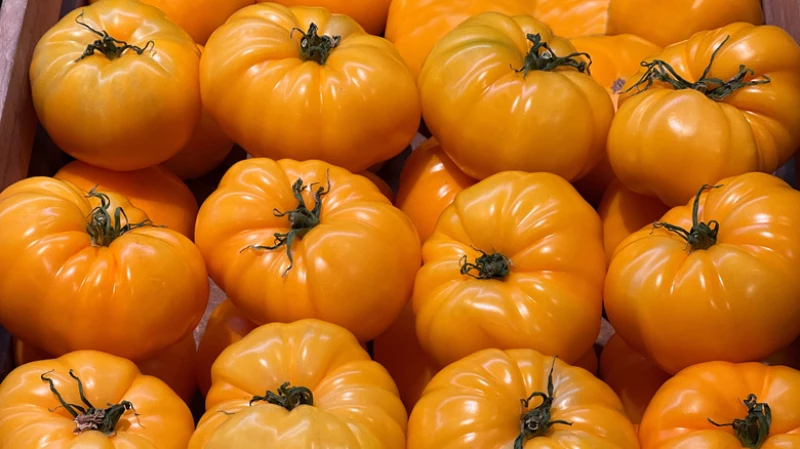
Kale is already packed with nutrients, but believe it or not, purple kale manages to squeeze in a few more antioxidants due to the anthocyanins that give it a deep purple color. There are some kale varieties with purple tinged leaves and some that are solid deep purple. Kale is a very cold-hardy green that's easy to grow in containers and survives well into the frost season. Some excellent colorful varieties include Red Russian (purple stems and veins, flat blue-green leaves), Redbor (curly, gorgeous purple-blue color), and Purple Moon (deep purple color, frilly leaves).
6. Bleu de Hongrie pumpkins
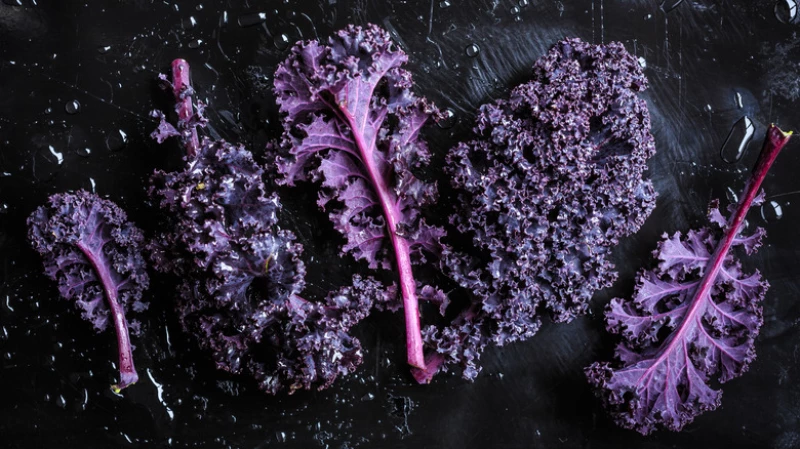
Pumpkins are not only delicious and nutritious but also make wonderful decorative items for autumn displays. Your pumpkins can do double duty as both decor and dessert or be served up savory style, roasted or fried. The Bleu de Hongrie is a medium-sized heirloom pumpkin with a slightly-flattened shape that comes in shades of pale blue and turquoise tinged with gray. These pumpkins look stunning arranged with warm autumnal shades of orange, red, and gold. This distinctive pumpkin is also great for cooking and has a sweet, tasty flavor and good cold storage qualities.
7. Turban squash
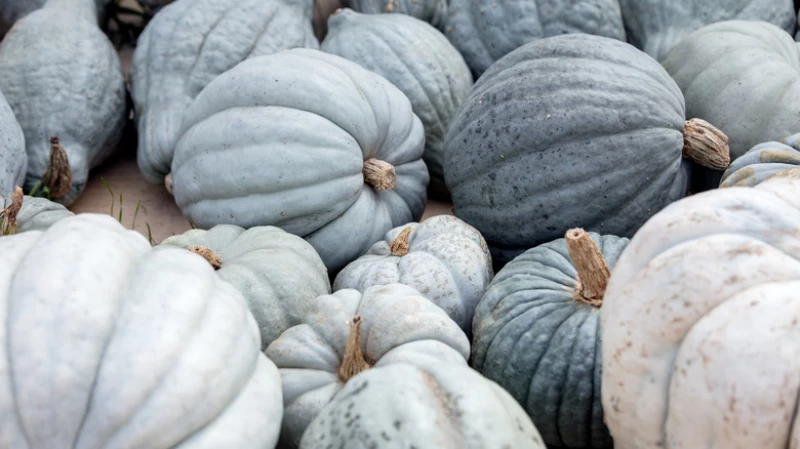
Turban squash is a type of winter squash that is known for its unique turban-like shape. It has a sweet and nutty flavor, making it a versatile ingredient in both savory and sweet dishes. Turban squash can be roasted, pureed, or used in soups and stews. Its vibrant color and decorative shape also make it a popular choice for fall decorations and centerpieces.
Shallots are part of the onion family and are a crucial element in French cooking. They offer a sweet and intricate flavor with subtle hints of garlic. Besides their flavor, shallots are visually appealing with their slender, curved shapes and rose-pink skins and flesh. Growing shallots necessitates similar conditions to growing onions, including ample sunlight. There are various shallot cultivars to experiment with, such as French Red (rose red shallot), Gray Griselle (known for its exceptional flavor), and Dutch Yellow (with a more onion-like taste).
Blue potatoes are a cheery change of pace from the usual white and yellow fleshed potatoes. These blue and purple potatoes make wonderfully-colorful baby potatoes when harvested early, boiled or roasted, and served whole. Potatoes like rich, well-draining soil that has been amended with aged manure and compost and straw mulch to fight weeds. There are a number of cultivars available for planting including Adirondack (oblong, dark purple), Purple Majesty (bright purple flesh), Magic Molly (a dark blue fingerling), and Blue Bella (a small white potato with blue-purple blotches).
Peppers are known for their diverse range of shapes, sizes, colors, and flavors, with sweet peppers being the most commonly cultivated variety. Sweet peppers typically start off as deep green and then transition to red as they ripen. Some varieties also mature into orange or yellow peppers, but a unique variation is the deep purple or black sweet pepper. These peppers thrive in sunlight and, like other sweet peppers, require regular but light watering. Two recommended black sweet pepper varieties to sample are Zulu (slightly spicy, resembling eggplant in color) and Andromeda (mild and sweet with a thick skin).

